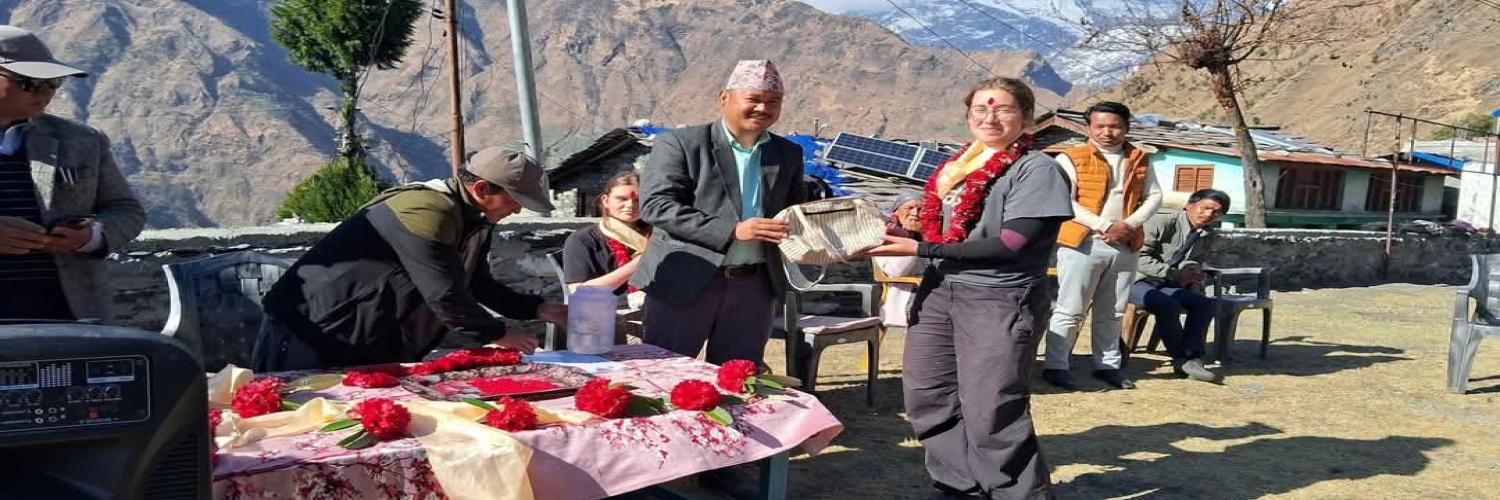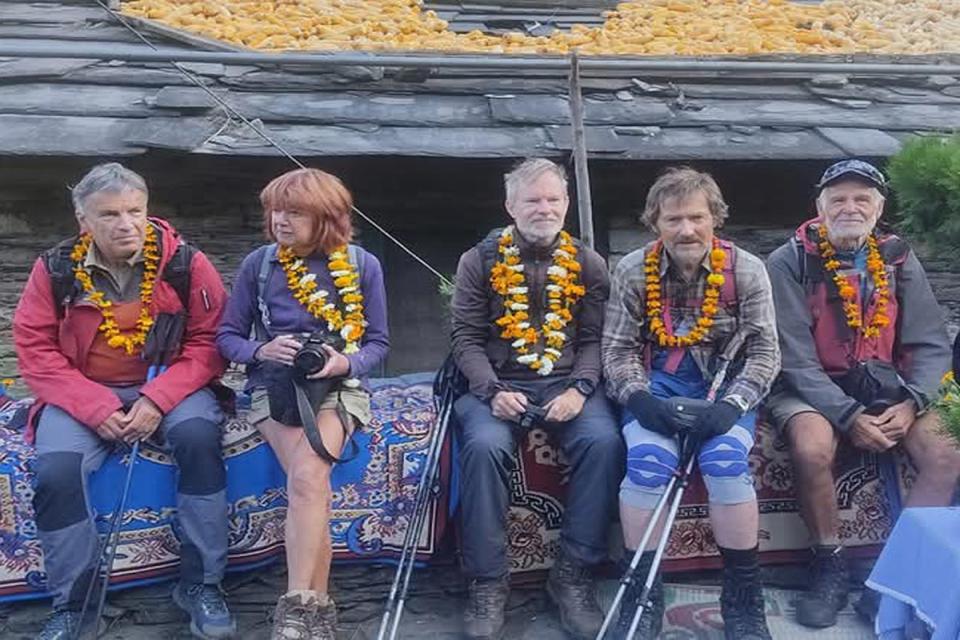Imagine trekking through untouched valleys, pristine alpine meadows, and remote Himalayan landscapes where few travelers have set foot. The API Himal Base Camp Trek offers just that - a raw, breathtaking adventure into the far-western wilderness of Nepal.
But here’s the catch: timing is everything.
The weather, visibility, and overall trekking experience can vary dramatically depending on when you go. Picking the right season can mean the difference between walking through a foggy, rain-drenched trail and hiking under crisp blue skies with panoramic mountain views.
In this comprehensive guide, we’ll help you uncover the best time for the API Himal Trek, understand the regional climate, and decide when to plan your journey for the most magical experience. Whether you're a seasoned adventurer or a first-time trekker, timing your trip right is crucial.
Unveiling the API Himal Region
The API Himal Base Camp Trek is a remote and less-explored route located in Darchula District, far-western Nepal. This trek introduces you to a rugged, culturally rich, and spiritually significant landscape that feels worlds away from the bustling trails of Everest and Annapurna.
The name "API" refers to Mount Api (7,132m), the highest mountain in the western Himalayas of Nepal. Its snow-capped peak dominates the skyline, along with its neighbor Mount Saipal. The area is collectively known as the API Saipal Himal range, forming a majestic wall along the Nepal-China border.
Apart from breathtaking mountains, the region is home to:
-
Alpine meadows and river valleys
-
Sacred lakes like Kalidhunga
-
Ethnic villages where the Byansi, Chhetri, and other local groups preserve ancient traditions
-
API Nampa Conservation Area, a protected region with diverse flora and fauna
This is not a commercial trail. It’s raw, real, and ideal for trekkers seeking solitude, culture, and adventure in its purest form.
Understanding the Climate in API Himal Region
To determine the best season for API Himal Base Camp Trek, it’s important to understand the local climate. Unlike central Nepal, the far-western Himalayas follow a slightly different weather rhythm due to their isolation and varied topography.
The trek covers elevations ranging from 1,000 meters in low valleys to over 4,000 meters at the base camp. The higher you go, the colder and more unpredictable the weather becomes.
Weather Quick Facts:
-
Spring (March-May): Mild, blooming, great visibility
-
Summer/Monsoon (June-August): Heavy rain, slippery trails, landslides
-
Autumn (September-November): Clear skies, pleasant temperature, best visibility
-
Winter (December-February): Snowfall, freezing cold, trail closures
Season-by-Season Guide to API Himal Trek
Let’s break down each season to help you decide when to trek.
Spring (March to May)
Pros:
-
Rhododendron and alpine flowers in bloom
-
Mild temperatures during the day
-
Clear mountain views in April and early May
Cons:
-
Late May can bring occasional pre-monsoon showers
-
Trails may still have residual snow in early spring
Trekking Experience:
Spring brings new life to the Himalayas. Meadows turn green, flowers bloom, and wildlife becomes more active. This is a fantastic time for nature photography and spotting birds and rare animals.
Best Month in Spring: April
Monsoon/Summer (June to August)
Pros:
-
Lush landscapes and vibrant greenery
-
Fewer trekkers, total solitude
Cons:
-
Frequent rain and cloud cover
-
High chance of landslides and leech-infested trails
-
Difficult transportation due to roadblocks
Trekking Experience:
While monsoon transforms the forests and valleys into a lush paradise, it comes with dangers: landslides, muddy paths, and poor visibility. We do not recommend trekking during this time unless you’re an expert hiker with local guidance.
Best Month in Monsoon: None recommended
Autumn (September to November)
Pros:
-
Clear blue skies and stunning views
-
Dry, stable weather
-
Festivals like Dashain and Tihar add cultural richness
Cons:
-
More trekkers on the trail (although API is rarely crowded)
-
Cold mornings and nights in higher altitudes
Trekking Experience:
This is hands down the best time for the API Himal Trek. With post-monsoon clarity, snow-capped peaks appear in full glory. Trails are dry and stable, and temperatures are perfect for walking. It's also a great time to experience Nepali culture and festivals.
Best Month in Autumn: October
Winter (December to February)
Pros:
-
Stark beauty with snow-covered peaks
-
Complete solitude
Cons:
-
Freezing temperatures, especially at night
-
Snow blocks higher sections of the trail
-
Many tea houses may close
Trekking Experience:
Winter is a mixed bag. If you’re a hardcore trekker who enjoys snow and solitude, you might consider it. But for most people, winter is too harsh. The risk of trail closures is high due to snowfall at higher altitudes.
Best Month in Winter: Early December (if attempting at all)
So, When is the Best Time for API Himal Trek?
The two golden windows are:
Spring: Mid-March to Mid-May
-
Warmer days
-
Blooming flora
-
Great for photographers and naturalists
Autumn: Mid-September to Late November
-
Clear views and stable weather
-
Peak trekking season
-
Ideal for panoramic photography and cultural immersion
Why Picking the Right Season Matters
Choosing the right time for your API Himal Base Camp Trek is more than just a matter of comfort - it directly impacts your safety, enjoyment, and the overall success of your trip. Here’s why timing is crucial:
1. Trail Conditions and Safety
-
Dry seasons (spring/autumn) offer firm and stable trails, reducing the risk of slipping or injury.
-
In monsoon, trails become muddy, washed-out, or blocked due to landslides and floods.
-
Snow in winter can obscure paths, freeze water sources, and cause altitude-related challenges.
-
The right season minimizes risks and enhances your trekking efficiency and confidence.
2. Weather Predictability
-
Good weather equals clear skies, better visibility, and pleasant walking conditions.
-
In the wrong season, weather can change unpredictably, leading to delays, detours, or cancellations.
-
Avoiding storms, fog, and high winds ensures you make the most of your trekking days.
3. Visibility and Mountain Views
-
The API Saipal Himal range is stunning - but only if the skies are clear!
-
During autumn and spring, visibility is at its best, offering crisp panoramas of snow-covered peaks.
-
In contrast, monsoon clouds or winter fog can completely block views.
4. Physical and Mental Comfort
-
Trekking in extreme conditions (too hot, too cold, too wet) can be exhausting and demotivating.
-
Proper seasonal planning ensures comfortable day temperatures, warm accommodation, and manageable hiking hours.
-
You’ll enjoy the journey more and reduce the risk of fatigue or illness.
5. Cultural Immersion Opportunities
-
Trekking during festival seasons (Dashain, Tihar) in autumn means you get to witness and participate in local customs.
-
Villages are livelier, people are in a celebratory mood, and it’s a great time for cultural exchange.
-
Off-season trekking may limit your interaction as locals may migrate or stay indoors due to harsh weather.
6. Wildlife and Nature Experience
-
Spring brings out the full bloom of rhododendrons and other Himalayan flora.
-
Wildlife sightings are more frequent during moderate weather, especially birds, deer, and langurs.
-
During monsoon or winter, many species retreat into hiding.
7. Photography Potential
-
The best images whether of landscapes, sunrises, villages, or portraits - require optimal light and weather conditions.
-
Dust-free skies in autumn and vibrant flora in spring offer rich contrasts and depth to your photos.
-
Monsoon and winter often dull the visual appeal due to haze, clouds, or fog.
8. Accessibility and Logistics
-
In the right season, transportation runs smoothly, flights and jeeps operate on time, and accommodations are open.
-
In off-seasons, blocked roads, cancelled flights, and closed tea houses can affect your itinerary or force you to turn back.
9. Group Trekking & Social Vibes
-
During popular seasons, you might meet other trekkers - great for shared stories, safety, and camaraderie.
-
In monsoon or winter, you may go days without seeing another person, which can be isolating.
10. Cost and Value
-
While low season may offer discounts, the trade-offs in safety and experience often outweigh the savings.
-
Trekking in peak seasons ensures you get full value for your investment - from weather to guiding services and trail quality.
Flora, Fauna & Scenery by Season
|
Season |
Flora/Fauna |
Scenery |
|---|---|---|
|
Spring |
Rhododendrons, wildflowers |
Green meadows, snow peaks |
|
Monsoon |
Ferns, lush vegetation |
Foggy but vividly green |
|
Autumn |
Clear forests, dry grasslands |
Golden hills, sharp views |
|
Winter |
Bare trees, snow cover |
White landscapes, frozen lakes |
Photography Tips by Season
-
Spring: Best for flower close-ups, vibrant landscapes
-
Autumn: Crystal-clear mountain shots, ideal lighting
-
Winter: Black-and-white contrast, dramatic snowscapes
-
Monsoon: Lush greenery but limited visibility
Trekkers’ Experience Varies by Season
|
Season |
Trekker Volume |
Accommodation |
Accessibility |
|---|---|---|---|
|
Spring |
Medium |
Open |
Good |
|
Summer |
Low |
Limited |
Poor (road issues) |
|
Autumn |
High |
Fully operational |
Excellent |
|
Winter |
Very Low |
Many closed |
Challenging |
Essential Trekking Tips Based on Season
Spring/Autumn:
-
Pack layered clothing (mornings and nights are cold)
-
Bring sun protection (UV is high)
-
Carry power banks and headlamps
Monsoon:
-
Waterproof everything (bags, clothes, shoes)
-
Use insect repellent
-
Be flexible with your itinerary
Winter:
-
Heavy down jacket, snow boots, sleeping bag
-
Trek with a local guide
-
Check daily weather and trail updates
Conclusion
The API Himal Base Camp Trek is one of Nepal’s last truly wild trekking adventures. From its towering peaks and untouched valleys to its rich culture and serene atmosphere, it promises an unforgettable journey.
But to experience its full magic, timing is everything.
For the best blend of weather, views, and trail conditions, aim to trek in April-May or October-November. These are the best times for the API Himal Trek, and they’ll reward you with memories to last a lifetime.
Ready to explore Nepal’s hidden Himalayas?
Book your API Himal Base Camp Trek with Best Heritage Tour today!
Contact Us Today:
Website: www.bestheritagetour.com
Email: info@bestheritagetour.com
Phone/ Viber/ Whatsapp: +977-9851149197
Office Location: Thamel Marg, Kathmandu Nepal
Don’t miss your chance to trek to one of Nepal’s most remote and awe-inspiring destinations. Book your API Himal Base Camp Trek today!
Author: Best Heritage Tour
Date: 23rd June, 2025


